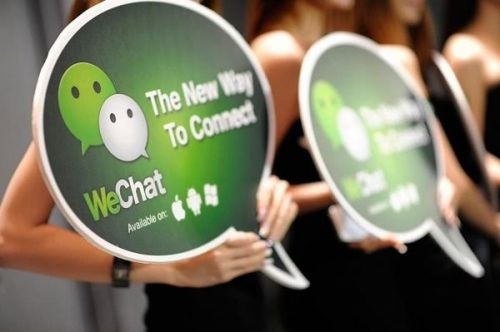The Power of WeChat
With over 650 million active monthly users, WeChat, which has been dubbed the “Eastern WhatsApp”, is gathering more and more attention from Western brands. So how and why are brands leveraging the WeChat network?
More than just an instant messaging service (complete with all the trimmings – voice messaging, picture messaging, stickers, group chat, etc.,), WeChat also allows users to create a public account from which they can push feeds and interact with subscribers.

More than that, the platform also supports a “moments” feature (which users can use to share images and short videos with friends) as well as “city services” in more than 27 cities across China – which allows users to book doctor appointments, pay electricity bills and traffic fines, as well as book transportation. The app even supports payment and money transfers, which allows for peer-to-peer transfer and electronic payment.
So, as you can see, the “Eastern WhatsApp” epithet is perhaps not the most appropriate, since WeChat goes far above and beyond the services WhatsApp offers. However, though all of this makes for an incredibly enticing proposition for consumers, many brands have struggled to make use of the platform – with a 2014 Forrester Research report claiming that “WeChat is not a good marketing tool yet.”
In effect, WeChat, which took its initial inspiration from WhatsApp, is an incredibly pumped-up instant messaging app, and this means that, though it’s great for private, one-to-one communications, it’s not primarily been designed to accommodate mass brand communications.
However, for some ambitious brands, this just means that they have to think outside of the box, and work within the app’s limitations to provide something of value to their consumers. McDonalds, Pepsi, and Burberry were amongst the first to use the platform to market their brand.
Burberry, for example, used WeChat to take their fans behind the scenes at its London runway show in 2014, offering them an audio commentary by the creative team and Chinese celebrities. And, when fans sent the brand a message, they instantly received a virtual plaque engraved with their name.
More recently, Tiffany & Co collaborated with artists and pushed messages, videos, and stories from a then six-month-old WeChat account to promote their Keys jewellery collection. The idea was to unlock the Chinese consumer’s potential, of whom 668 million now are regular internet users, and 659 million are active social media users.
So, whilst WeChat poses a challenge, by using innovative strategies and a left-field approach, some brands are proving that it’s possible to use the app to target new consumers who may not access or use “Western” social networks. Indeed, this may be their best way to “unlock” the Eastern consumer’s potential.
What do you think about brands using WeChat? Will it change the way global brands approach marketing? Or is the platform too limiting?
Email us your thoughts.
